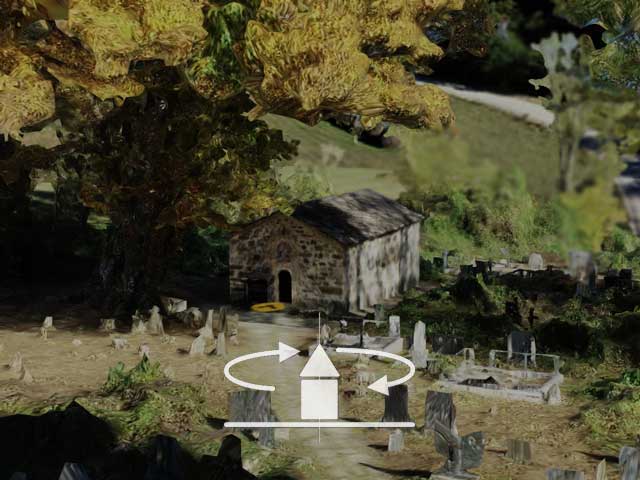ST. MINA CHURCH
Protected cultural monument of great importance, listed as SK 220 with the Republic Institute for the protection of monuments of cultural heritage.
ST. MINA CHURCHLukovska banja
Location
St. Mina church is located in the eastern part of the village cemetery, in the village of Stava under the mountain Kopaonik, about 10 km upstream from Lukovska banja.
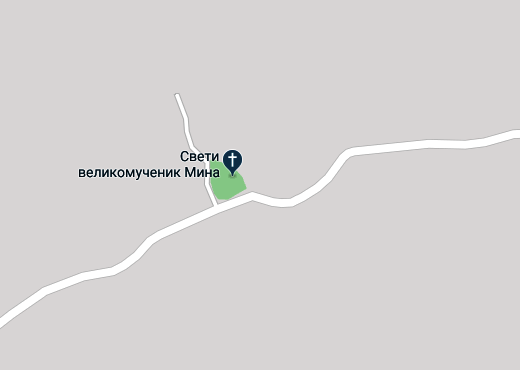
Research
In 1977 works on immediate technical protection of the object itself were performed, and in 1978 and 1979 preliminary archaeological research was conducted inside of the church: the altar part, narthex and nave were researched in order to obtain the levelling of the original floor. The 2 m wide space around the church was researched as well, in order to place the drainage and protect the object from moisture. The whole area around the church contains the remains of a necropolis. Two phases of burial were noticed, as well as a number of destroyed graves. Moveable material found inside the graves dates between 14th and 18th century. Apart from the simplest placing of the deceased one into the grave, a certain number of graves in the part west from the church, had two processed slabs made of white marble, decorated with a floral ornament. Tiles with a characteristic depiction of a human head were placed sideways above the head. The same marble tiles were used to tile the floor in one of the restorations of the church. During the conservatory works, the monuments were lifted off the floor and are now preserved in the former village school.
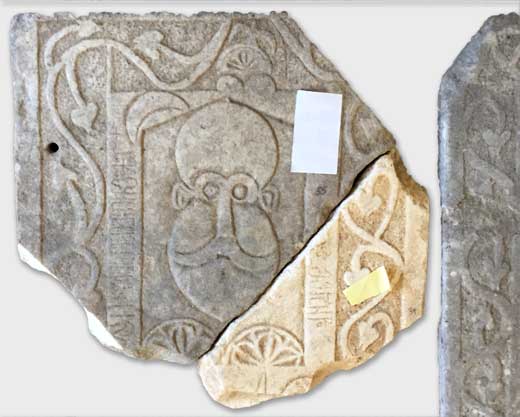
North of the church entrance, a grave with a two-part construction was discovered. The deceased was laid in a stone chest while the upper, overhead part was made of marble slabs bound with spiked iron bars.. On one of the plaques is an inscription in old Slavic stating that "the lord Sir Andrew, who died in the summer of 1656," was buried there. The church was erected in the first half of the 17th century, on an existing cult site, and was painted in the second half of the same century. As the ktetor inscription states, the church was built by fathers and painted by sons in 1633 or 1636.
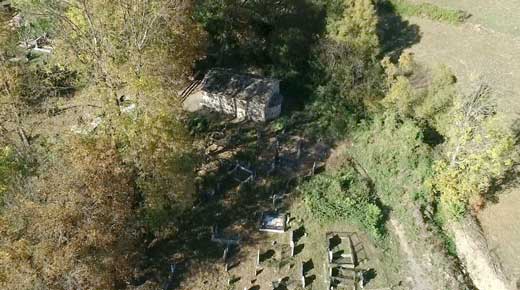
Description
The Church of Saint Mina is a small, single nave building with a narthex, with a semicircular apse in the east. It was built with cut rubble and the cornice with profiled tufa, with gabled roof covered with stone slabs. It is buried in the ground so that one has to go down two steps to reach the narthex. The nave has small, narrow windows so that the inside of the church is dark. On the west wall, above the entrance, the semicircular vaulted niche depicts the protector of the church, St. Mina.
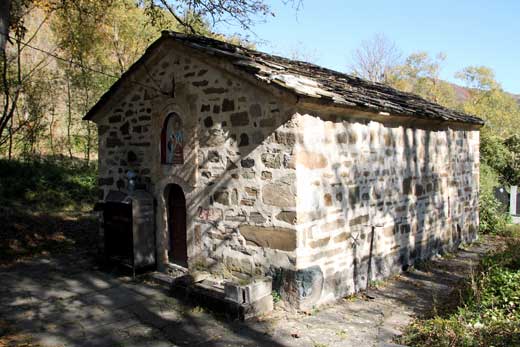
In front of the church, to the northwest, the bell tower was built from wooden beams. The bell was cast in Belgrade in 1938.
Iconography
This is the only church in the area of Kursumlija municipality with almost completely preserved iconography. The church was painted in the 17th century, during Patriarch Pajsije’s reign, and sir Andrew deserves special merit for that. The painters, Greeks in origin, Nicolas, Tomas, Dimitrije and John, painted the church in Byzantine style, using dark blue background with details separated by red borders. In the altar, they painted the Mother of God with archangels, on the dome of the nave there is Christ the Pantocrator, and underneath prophets in medallions. On the walls of the nave there are scenes of great holidays and Christ’s passions. The best preserved are: The Transfiguration of Christ, Pentecost, Dormition of the Mother of God, Last Supper and Juda’s Betrayal.
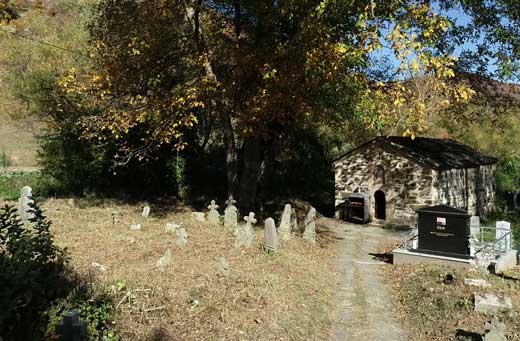
The vault of the narthex shows Christ the Angel of the Great Council and the Mother of God. The walls show the cycles of Virgin Mary’s akathist, St. Nicolas and St. Mina, and the east wall of narthex depicts the Last Judgement.
Folk belief
Folk lore states that the church was built by a feudal lord Mrksa 37 years after the battle of Kosovo, i.e. in 1426. Mrksa was prince Lazar’s duke sent to control the production of ore at the foot of mountain Kopaonik. The legend of duke Mrksa who brought Saxon miners is still alive in this area, with the legends of buried treasure and golden coach taken by the river Toplica (golden coach is here the ore smelter). The lore also preserves the memory of a time when this area was rich thanks to the developed mining and when the villagers could afford to place headstones made of white marble and have rich offerings in their graves.
Julka Kuzmanović Cvetkovićarcheologist
